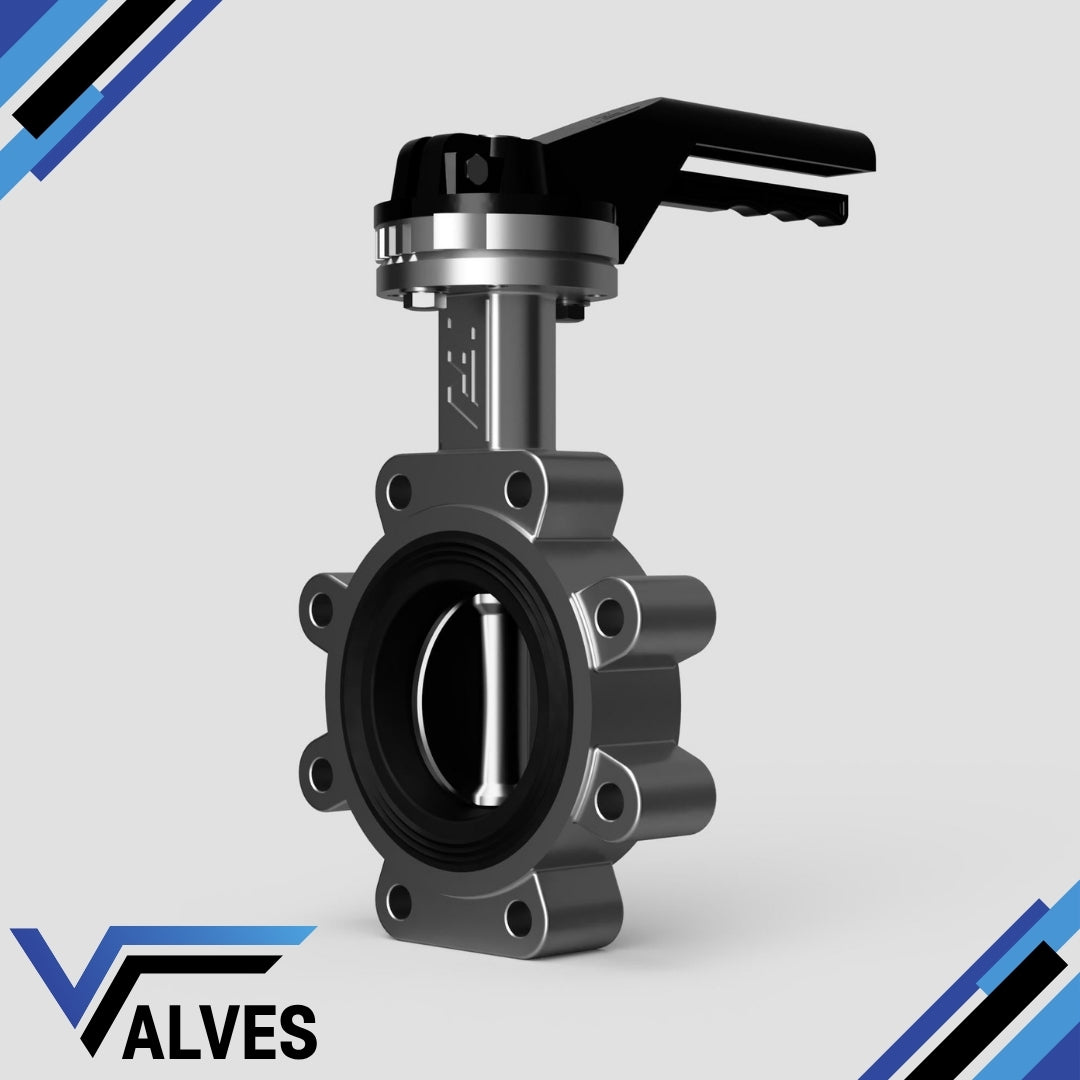Valves UK
TTV Stainless Steel Lugged Butterfly Valve - NBR Seat
TTV Stainless Steel Lugged Butterfly Valve - NBR Seat
Couldn't load pickup availability
The TTV Stainless Steel Lugged Butterfly Valve with an NBR Seat is a high-performance valve designed for precise flow control in a wide range of industrial applications. Crafted from premium-grade stainless steel, this valve offers exceptional corrosion resistance, ensuring long-lasting durability even in harsh environments. The lugged design provides secure and easy installation, making it suitable for both dead-end service and in-line maintenance.
The NBR seat enhances the valve’s sealing capabilities, providing excellent resistance to oils, fuels, and other hydrocarbons, making it ideal for applications where rubber-like flexibility and tight sealing are required. The valve's compact design allows for easy installation in confined spaces, and the handle or actuator (manual or automated) ensures smooth and reliable operation.
Key Features:
Durable Construction: Made from high-quality stainless steel for corrosion resistance and longevity.
NBR Seat: Offers excellent sealing performance and resistance to oils and chemicals.
Lugged Design: Allows for secure installation and easy maintenance.
Versatile Applications: Suitable for use in chemical processing, water treatment, HVAC systems, and more.
Easy Operation: Available with manual or automated actuation for convenient control.
Applications: This valve is ideal for industries such as chemical processing, food and beverage, water treatment, and HVAC systems, where reliable and efficient flow control is critical. Its robust construction and dependable sealing make it a trusted choice for both standard and demanding environments.
Compliance: Meets industry standards for pressure and temperature ratings, ensuring safe and efficient operation in a variety of settings.
Technical Specifications:
Body Material: Stainless Steel
Seat Material: NBR (Nitrile Butadiene Rubber)
Connection Type: Lugged
Operation: Manual, Pneumatic, or Electric Actuation options available
Note: Please consult with our technical team for sizing and specific application requirements to ensure the best performance in your system.
Share

FAQ's
What is the difference between a valve and an actuator?
What types of actuators are available?
The main types of actuators are:
Pneumatic actuators – use compressed air for fast, reliable operation.
Electric actuators – use electrical power for precise control.
Hydraulic actuators – use fluid pressure for high-torque applications.
Each type offers unique advantages depending on the environment, media, and system control needs.
How do I choose the right actuator for my valve?
To select the correct actuator, consider:
Valve type and torque requirement
Power source available (air, electric, or hydraulic)
Operating environment (temperature, humidity, hazardous area)
Control signal type (on/off or modulating)
Matching actuator torque and compatibility with the valve’s ISO mounting ensures reliable performance.
What are the main types of valves used in automation?
The most common valves in automated systems include:
Ball valves – for tight shutoff and quick operation.
Butterfly valves – for larger flow control with compact design.
Globe valves – for precise throttling and flow regulation.
Check valves – to prevent backflow.
Gate valves – for full bore flow isolation.
What’s the difference between a double-acting and spring-return actuator?
Double-acting actuators use air (or power) to both open and close the valve.
Spring-return actuators use air to open (or close) the valve, and a built-in spring to automatically return it to a safe position when power or air is lost — ideal for fail-safe operation.
How often should valves and actuators be serviced?
Regular maintenance intervals depend on operating conditions, but a good rule of thumb is to inspect every 6–12 months.
This includes checking for leaks, lubrication, seal wear, and actuator responsiveness to prevent unexpected downtime.

